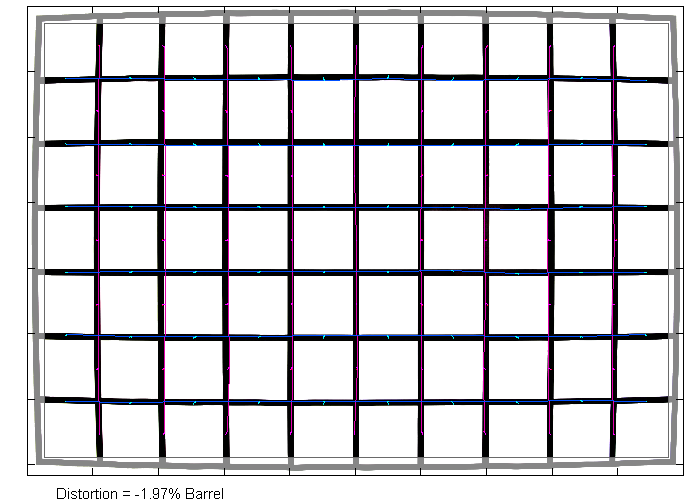|
Canon EF-S 10-18mm f/4.5-5.6 STM IS - Lab Review / Test - Analysis |
|
Lens Reviews -
Canon EOS (APS-C)
|
|
Page 2 of 2

Distortion
Most "kit-grade" zoom lenses have a major weakness - heavy distortions at the wide-end. However, the Canon lens is almost a pleasant surprise in this respect. It produces a medium amount of barrel distortion at 10mm and the issue is basically negligible from 14mm onward.
|
Move the mouse cursor over the focal length text marks below to observe the respective distortion
|
| 10mm |
14mm |
18mm |

|
Vignetting
While the distortion characteristic is actually pretty good, things aren't quite as rosy in terms of vignetting. The light falloff is massive (for an APS-C lens) at 10mm @ f/4.5. A vignetting of 2.2EV (f-stops) is way beyond our usual APS-C scale here and easily visible in images. It's not overly much better at f/5.6 either and still significant at f/8 and f/11. There's also some vignetting at 14mm & 18mm at fully open aperture but the readings are actually good at f/8 and beyond here.

MTF (resolution)
We've seen it already with the Canon EF-S 18-55mm f/3.5-5.6 IS STM ... Canon really knows how to design sharp lenses even at this price point. The MTF results are nothing short of astounding. However, first of all some comments regarding the "curves" below. Some of you may be surprised that the lens is capable of providing its best results at max. aperture. This may sound strange but please keep in mind that APS-C lenses perform best around f/4 (full format: around f/5.6) and diffraction has already an impact when stopping down. Thus because the Canon lens is "so slow" to start with, it performs already best between f/4.5 and f/5.6.
The center quality is generally excellent till f/8 and the borders as well as the corners are very good. At f/11 diffraction has a significant impact already. Usually we don't include the reading for f/16 but we've shown it here just to illustrate that this setting should be avoided on APS-C cameras. The reduced quality has nothing to do with the lens, this is just physics in action. The field curvature is very low.
The centering quality of the tested sample was good.
Please note that the MTF results are not directly comparable across the different systems!
Below is a simplified summary of the formal findings. The chart shows line widths per picture height (LW/PH) which can be taken as a measure for sharpness.
If you want to know more about the MTF50 figures you may check out the corresponding Imatest Explanations
Chromatic Aberrations (CAs)
The level of lateral CAs (color shadows at harsh contrast transitions) is well controlled with an average pixel width around 1px at the image borders. There's an increase in the image corners to around 1.5px (not shown below) which is still pretty good for an ultra-wide lens.

VerdictThe mirrorless gang may have all the attention at the moment. However, Canon showed once more that the quality crown still belongs to DSLR systems - even and especially regarding low cost lenses. The Canon EF-S 10-18mm f/4.5-5.6 IS STM may be very slow but it is darn sharp in the relevant aperture range. In fact it is every bit as good as the Canon EF-S 10-22mm f/3.5-4.5 USM here ... at half the price! The amount of lateral CAs is well controlled. In critical scenes (e.g. architecture) you will be able to spot some barrel distortions at 10mm but we've seen a lot worse here. The only significant weakness is vignetting especially at 10mm. It's a good idea to work with vignetting auto-correction to compensate this.
Full-metal lovers will not be impressed by the lens but truth is that the build quality is actually very decent despite the heavy use of plastics. Objectively we don't see any reason to complain here really. The new STM AF is essentially silent and very fast. Canon's IS (image stabilizer) is a proven technology by now and it's a welcome feature to help out in low light situations. And it is also a differentiator towards the much more expensive Canon EF-S 10-22mm f/3.5-4.5 USM.
The Canon EF-S 10-18mm f/4.5-5.6 IS STM may have a weak spot but when taking the generally high quality as well as the extraordinary low price point into account, we can only conclude ... "highly recommended"!
|